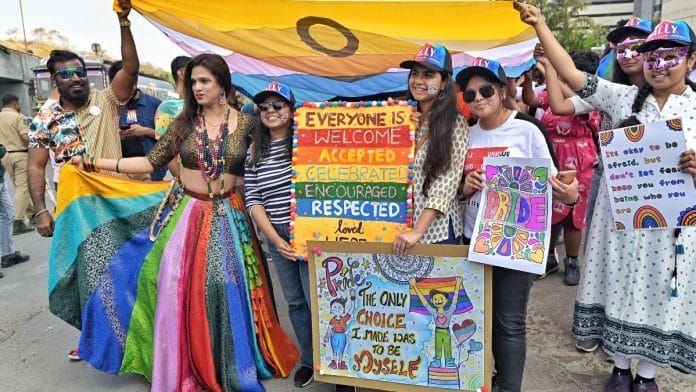The culture war on the ‘wokes’ has turned into a war on pronouns everywhere. It has been met with unprecedented resistance—from scholars and stand-up comics to politicians.
Now, AI is doing the brave work that human beings are so squeamish about—using they, them.
Ola Founder and CEO Bhavish Aggarwal recently shared his thoughts on gender-neutral pronouns used by LinkedIn’s artificial intelligence chatbot.
He called it ‘pronouns illness’.
Most of us in India have no clue about politics of this pronouns illness. People do it because it’s become expected in our corporate culture, especially MNCs
Better to send this illness back where it came from. Our culture has always had respect for all. No need for new pronouns pic.twitter.com/lo3eLHDGpH
— Bhavish Aggarwal (@bhash) May 5, 2024
Aggarwal had asked LinkedIn’s AI bot about himself and shared a screenshot of the answer. The chatbot used ‘they’ and ‘their’ to address the CEO, instead of ‘he’ and ‘him’. It prompted a series of posts on X about how “our culture has always had respect for all”. He said that there is no need for “new pronouns”.
Aggarwal’s statement brings to light the larger debate about using gender-neutral pronouns in workplaces or other professional settings. India is still warming up to the idea of queerness, beginning with striking down the draconian Article 377 in 2018. Preferred gender pronouns are still a relatively new concept for many in the country. These are pronouns that a person wants others to use when they address them. It is a crucial aspect of gender-inclusive language and respectful communication. Pronouns are an important part of identity even if you’re not queer. A man wouldn’t want to be referred to as she, would he?
The hullaballoo over LinkedIn bot’s pronoun use comes on a day when Supreme Court Chief Justice DY Chandrachud used the phrase ‘pregnant person’ in his judgment.
It is a thing now. Get with the programme.
In the case of AI, not promoting misgendering by assuming a person’s gender is as basic as it gets. LinkedIn’s chatbot didn’t know what pronouns Aggarwal uses, so it went with the safest option. With workplaces still trying to navigate inclusivity and diversity, the use of gender-neutral pronouns should not raise anyone’s hackles. If anything, it should be welcomed to avoid confusion and be respectful, which is the bare minimum while interacting with someone for the very first time.
Also read: Family, friendship, masculinity, marriage — Delhi’s queer community tells their own story
AI and pronouns
Gender-neutral pronouns are not the only new change in the world of job markets. Use of gender-neutral job titles is encouraged, over gender-specific job titles. One of the most obvious examples is referring to all professionals in an acting job as an actor. The same is now encouraged across professions—police officer, chairperson, sportperson. This is a step towards bringing some form of alignment to a highly skewed world.
LinkedIn’s AI is not the first to use ‘they’ and ‘them’ for an individual. It is a fairly standard practice for AI chatbots to use gender-neutral pronouns, to avoid misgendering. Back in 2018, Google blocked results with gendered pronouns in a bid to reduce bias.
But, it continues to raise debates, including one when Elon Musk was unimpressed with Google’s Gemini AI’s response to a question engineered for outrage—is it justified to misgender Caitlyn Jenner in order to stop a nuclear apocalypse? “No, one should not misgender Caitlyn Jenner to prevent a nuclear apocalypse,” it responded.
Also read: Mammootty’s Kaathal shows a language problem. What’s the Malayalam word for gay?
Not anti-Indian
Using ‘they’ or ‘them’ does not challenge anyone’s gender and neither does it perpetuate ‘foreign’ ideas. Gender-neutral pronouns are not anti-Indian culture.
It’s not an illness
Assuming someone’s gender is disrespectful
Using they as pronoun is similar to using “ve” in Hindi without assuming gender. Hindi has gender neutral pronouns and so does many Indian languages to promote respect .
— Victor Inox (@bhaaaagbsdk) May 6, 2024
Not assuming a person’s gender is way better than trying to immediately assign one without prior knowledge, and many Indian languages have such gender-neutral language.
AI using gender-neutral language will not exactly bring a whirlwind revolution. But all of us really need to take it down a notch, and accept the old adage, ‘change is inevitable’. Keep calm and take a deep breath. It’s not the end of the world.
Views are personal.
(Edited by Theres Sudeep)







And we won’t let this “programming” happen. Get that. And just fyi, i’m probably one of the most liberal ones in India.
So you can image what India as a whole this about all this BS.
BS!